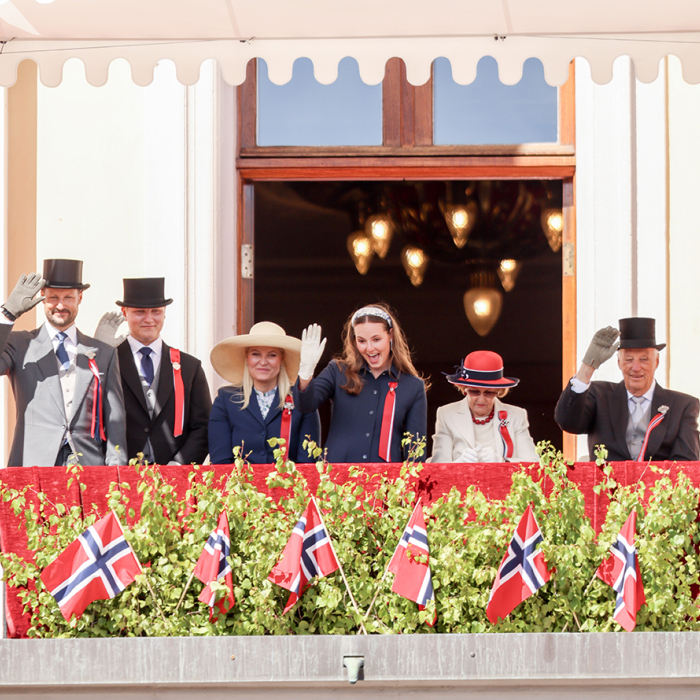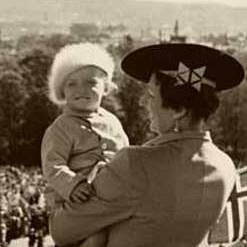Accession of the new monarch in 1991
King Olav V died on the evening of 17 January 1991. At that same moment, Crown Prince Harald became Norway’s new king: King Harald V. As the night passed, mourners began to fill the Palace Square with flowers and candles.
King Olav succeeded his father, King Haakon VII, on 21 September 1957, and reigned as King of Norway until his death at 10:20 pm on 17 January 1991. At the time of his death at the Royal Lodge outside of Oslo, he was 87 years old and the world’s oldest monarch. During the night and in the days following the announcement of his death, thousands of mourners made their way to the Palace Square to pay their respects to King Olav and show their support for the Royal Family. The Palace Square was a sea of flowers and candles.
King Harald has expressed his gratitude for the support of the people on several occasions:
“The enormous response and outpouring of sympathy made it clear that the Norwegian people stood beside us in our common grief. The condolence message registers from throughout the country, together with the candles and all the greetings from the Palace Square, warmed our hearts and consoled us in those difficult days.” (New Year’s Eve speech, 1991)
The official announcement of King Olav’s death was made by the King in an extraordinary Council of State at the Royal Palace at midnight. On 18 January 1991, King Harald gave his first speech as the Norwegian monarch, in which he paid tribute to his father and asked the people for their support in the task that lay before him.
King Olav’s funeral
On 30 January 1991, a huge crowd followed King Olav to his final resting place. The funeral took place in Oslo Cathedral, where Bishop Andreas Aarflot officiated. Following the ceremony, the cortège continued to the Palace Chapel at Akershus Fortress, where the traditional sprinkling of earth was performed. King Olav was then laid to rest in the Royal Mausoleum alongside his wife.
The King is dead – long live the King
When a monarch passes away the next monarch succeeds to the throne at that same moment – thus the expression: The King is dead – long live the King. However, the transition is also accompanied by a number of ceremonial components, the most important of which is the King’s oath of allegiance to the Constitution. King Harald and Queen Sonja - as King Olav before them - also chose to be consecrated in Nidaros Cathedral.
The King’s oath
On 21 January 1991, King Harald swore an oath in the Storting pursuant to Article 9 of the Constitution. The event took place during a formal ceremony in the Storting. President of the Storting Jo Benkow read the announcement of King Olav’s death before the King took the oath:
“I solemnly swear to reign in the Kingdom of Norway in accordance with its Constitution and laws, so help me Almighty God.”
Like his father and grandfather, the King adopted the motto We give our all for Norway.
Consecration
King Harald and Queen Sonja were consecrated in Nidaros Cathedral on 23 June 1991.
New monarchs have been consecrated to their office since 1163, but this has been part of the coronation ceremony. King Haakon VII and Queen Maud were the last monarchs to be crowned in Norway – in 1906. The Article relating to coronation in the Constitution of 1814 was repealed shortly thereafter. Upon the accession of King Olav, the coronation ceremony was replaced with a consecration ceremony in 1958. King Harald and Queen Sonja continued this tradition.
Following the consecration, King Harald and Queen Sonja embarked on a 10-day tour of southern Norway, and a year later they spent 22 days travelling through the four northernmost counties. The tradition of such consecration journeys dates back to the Middle Ages, when the kings travelled around the country to be hailed at the various regional assemblies.
Current news

Happy Constitution Day!
The Royal Family was in attendance on the Palace Balcony when the children's parade reached the Palace Square at 10:30 this morning. From there, they could greet more than 26,000 children from 109 schools taking part in Oslo's children's parade this year.

Celebrating May 17th
For more than 100 years, the Royal Family has greeted the Constitution Day children’s parade in Oslo from the balcony of the Royal Palace.

 Enlarge
Enlarge







